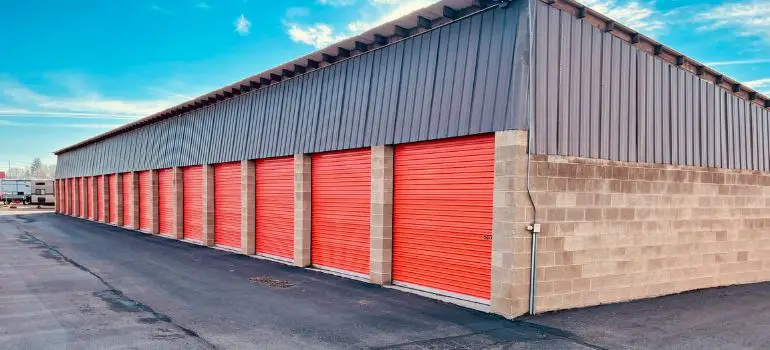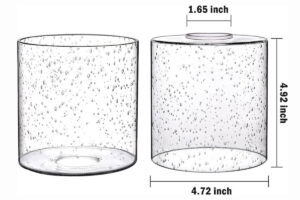If you find yourself struggling with a garage door that won’t open or close properly, the culprit may be a disconnected garage door chain. The garage door chain plays a crucial role in the operation of your garage door, and when it becomes disconnected, it can be frustrating and inconvenient. However, fear not! In this comprehensive guide, we will walk you through the process of reconnecting your garage door chain, step by step.
Understanding Your Garage Door Chain
Before we dive into the steps of reconnecting the garage door chain, it’s essential to have a basic understanding of how it works. The garage door chain is responsible for lifting and lowering the door. It connects to the garage door opener and moves along a track, pulling the door along with it. If the chain becomes disconnected, the door won’t function correctly.
Step 1: Safety First
Before you start working on your garage door, always prioritize safety. Make sure to disconnect the power to the garage door opener to prevent any accidents. Wear safety goggles and gloves to protect yourself during the process.
Step 2: Identify the Problem
One of the crucial steps in the process of reconnecting a garage door chain is identifying the problem accurately. Before attempting any repairs, you need to determine where and why the chain has become disconnected. Here’s how you can go about it:
- Visual Inspection: Start by visually examining the garage door chain. Look for any obvious signs of damage, such as broken links, loose bolts, or missing parts. Ensure that the chain is not tangled or twisted.
- Operational Test: Try operating the garage door using the opener. Observe how the chain moves (or doesn’t move). Does it make unusual sounds or jerky movements? Is there any grinding or scraping noise?
- Manual Testing: If the garage door doesn’t respond to the opener or behaves erratically, try operating it manually. Disconnect the opener and gently lift or lower the door by hand. Does it move smoothly along the track, or does it get stuck at a particular point?
- Check for Obstructions: Inspect the track and the area around it for any obstructions. Sometimes, foreign objects or debris can interfere with the chain’s movement, causing it to disconnect.
- Examine Chain Links: If you’ve identified that the issue is with the chain itself, closely inspect the links. Are any of them broken, bent, or misaligned? Even a single damaged link can disrupt the entire operation.
- Test Safety Features: Modern garage doors come with safety features like sensors that detect obstructions. Check if these sensors are working correctly. Sometimes, a false obstruction signal can cause the chain to stop.
- Review User Manual: Consult the user manual for your garage door opener. It often contains troubleshooting information and specific guidance for common problems.
- Seek Professional Advice: If you’re unsure about the problem’s cause or lack the experience to diagnose it, consider contacting a professional garage door technician. They have the expertise and tools to pinpoint issues accurately.
Step 3: Gather Your Tools
Before you start the process of reconnecting your garage door chain, it’s essential to have the right tools on hand. Having the necessary tools ready will help you work efficiently and ensure that you can complete the task without interruptions. Here’s a list of tools you’ll need:
- Wrench: A wrench is necessary for tightening or loosening bolts and nuts. It will come in handy when working on the garage door chain connections.
- Pliers: Pliers are useful for gripping and holding various components of the garage door chain securely. They can help you manipulate parts during the repair.
- Ladder: Since you’ll be working with the garage door and its components, a sturdy ladder is essential for reaching high areas safely. Make sure the ladder is stable and in good condition.
- Safety Goggles: Safety should always be a priority. Safety goggles will protect your eyes from debris, dust, and any accidental splashes of lubricants or cleaners.
- Gloves: Wear gloves to protect your hands during the repair process. They will provide a good grip and shield your hands from sharp edges or dirty surfaces.
- Silicone-Based Lubricant: You might need lubricant to ensure the smooth operation of the garage door chain once it’s reconnected. A silicone-based lubricant is ideal for reducing friction and noise.
- User Manual: Keep the user manual for your garage door opener handy. It can provide valuable guidance specific to your model and brand.
Step 4: Reconnect the Chain

Now that you’ve identified the problem and gathered the necessary tools, it’s time to reconnect the garage door chain. Follow these steps carefully to ensure a successful reconnection:
- Locate the Disconnected Section: Based on your earlier assessment, pinpoint the section of the garage door chain that is disconnected or damaged. Ensure that the garage door is in the closed position.
- Prepare the Chain: Use your pliers and wrench to realign any misaligned chain links. If you found any broken links during your inspection, replace them with new ones, following the manufacturer’s specifications for your garage door model.
- Position the Chain: Manually guide the chain back onto the sprocket on the garage door opener. Make sure it fits snugly and engages properly.
- Tighten Connections: Use your wrench to securely tighten any bolts or nuts on the chain connections. Ensure that there is no excessive slack in the chain. A properly tensioned chain is essential for smooth operation.
- Lubricate the Chain: Apply a silicone-based lubricant to the entire length of the garage door chain. This lubrication reduces friction and ensures quiet and efficient movement.
- Test the Garage Door: Reconnect the power to the garage door opener. Test the door’s operation using the opener and check for smooth, even movement. Also, verify that there are no unusual noises during the process.
- Manually Test the Door: In case you encounter any issues with the opener, manually open and close the garage door a few times. This helps ensure that the chain moves freely along the track and that there are no obstructions or binding points.
- Fine-Tune if Necessary: If you notice any issues during testing, such as the door not closing evenly or strange noises, make necessary adjustments. You might need to revisit the chain tension or alignment.
- Repeat Testing: Continue testing the garage door until you are confident that it operates smoothly without any issues.
Step 5: Test the Door
After reconnecting the chain, manually open and close the garage door to ensure it moves smoothly along the track. If you encounter any issues, double-check the chain connections and make necessary adjustments.
Common Problems and Solutions
Chain Keeps Disconnecting
If your garage door chain frequently disconnects, it may be due to worn-out or damaged chain links. In such cases, consider replacing the chain entirely for a more reliable solution.
Noisy Operation
If your garage door produces excessive noise during operation, it can be irritating for you and your neighbors. Fortunately, noisy garage doors can often be remedied with some straightforward steps. Here’s how you can reduce the noise:
Lubricate the Moving Parts
One of the primary reasons for noisy garage doors is friction between moving parts. To alleviate this, regularly lubricate the following components with a silicone-based lubricant:
- Rollers: Apply lubricant to the rollers’ bearings to ensure smooth movement along the tracks.
- Hinges: Lubricate the hinges where they pivot to reduce creaking sounds.
- Springs: Apply lubricant to the torsion or extension springs, but be cautious as these springs are under tension.
- Chain or Belt: Lubricate the garage door opener’s chain or belt to minimize noise as it moves.
Tighten Loose Parts
Over time, vibrations from the garage door’s operation can loosen bolts, nuts, and screws. Inspect the entire system, including the tracks, brackets, and opener, and tighten any loose hardware. This will help reduce rattling noises.
Replace Worn-Out Rollers
If your garage door has metal rollers with worn or cracked bearings, consider replacing them with nylon or steel ball-bearing rollers. These quieter rollers will significantly reduce noise during operation.
Check for Track Alignment
Inspect the alignment of the garage door tracks. Misaligned tracks can cause the door to rub against them, resulting in noise. If you notice any misalignment, carefully adjust the tracks to ensure they are parallel and properly positioned.
Soundproofing Solutions
Consider applying soundproofing materials to the garage door or the surrounding walls. These materials can help dampen the noise produced during operation. Additionally, adding weatherstripping around the door can minimize vibrations and noise.
Regular Maintenance
Perform routine maintenance on your garage door, including inspections and lubrication, to prevent noise issues from developing. Regular care can extend the lifespan of your garage door and keep it running quietly.
Consult a Professional
If the noise problem persists despite your efforts, it might be an indication of more significant issues. In such cases, it’s advisable to consult a professional garage door technician. They can diagnose the problem and recommend appropriate solutions, such as replacing worn-out parts or making adjustments.
Uneven Movement
If your garage door moves unevenly, it could be a sign of a misaligned chain. Adjust the chain’s tension and alignment to ensure smooth movement.
Chain Replacement
If the garage door chain is beyond repair, it’s time to replace it with a new one. Consult your garage door’s manual or a professional for guidance on selecting the right replacement chain.
Conclusion
Reconnecting a garage door chain may seem like a daunting task, but with the right tools and guidance, it can be a manageable DIY project. Remember to prioritize safety, identify the issue, gather your tools, reconnect the chain carefully, and test the door for smooth operation. By following these steps, you can enjoy the convenience of a properly functioning garage door.
FAQs
Yes, you can attempt to reconnect the chain yourself if you have the necessary tools and follow safety precautions. However, if you’re unsure, it’s always best to consult a professional.
The garage door chain can disconnect due to wear and tear, broken links, or improper tension. Identifying the exact cause is essential for a successful repair.
Yes, regular lubrication and occasional inspections are recommended to ensure the garage door chain functions smoothly and lasts longer.
It’s best to use a silicone-based lubricant specifically designed for garage door chains, as it reduces friction and noise effectively.
Regular inspections every few months are advisable to catch any problems early and prevent unexpected breakdowns.




